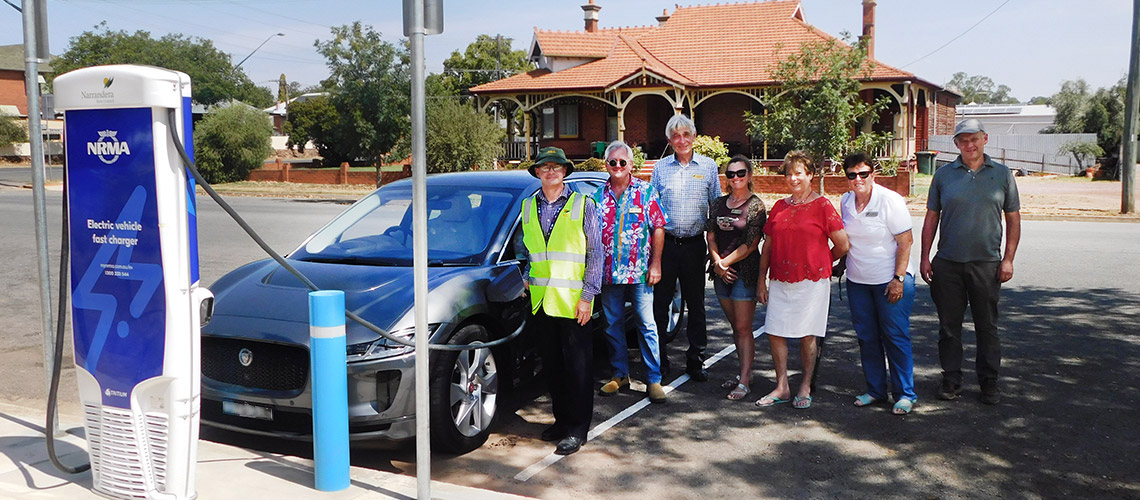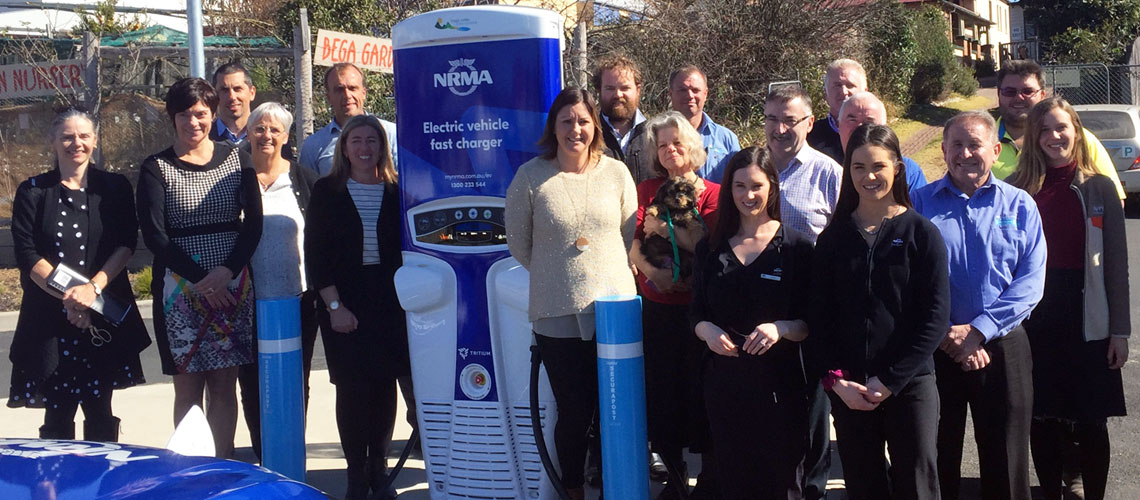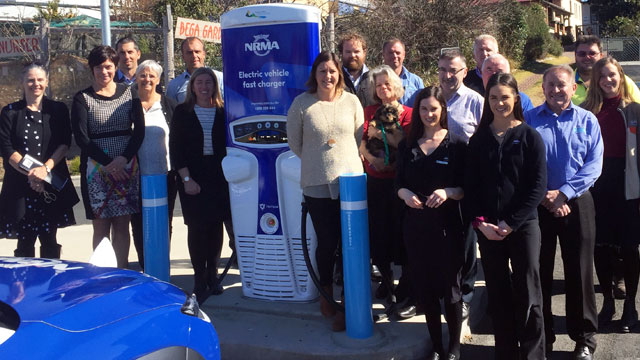
The NRMA has reached a key milestone in Bega today with the launch of its 20th Electric Vehicle Fast Charging station, marking the halfway point in its $10 million commitment to build one of Australia’s largest fast charging networks across NSW and the ACT.
The charger has opened the entire South Coast to EV tourists for the first time. This charger will now allow routes from Sydney all the way to the Victorian border, which until now has not been possible via public chargers.
The fast charger will allow most EV motorists to fully charge their cars in about 30 minutes. Standard public EV chargers take between three and six hours, and traditional power outlets can take more than 12 hours.
The station has been installed at Bega Shire Valley Council’s centrally located car park at 81 Gipps Street, one block from the town’s main street.
The Bega charging station is the 20th of the NRMA’s electric vehicle fast charging stations to open to the public across the state, following Sydney Olympic Park, Wallsend near Newcastle, Jindabyne, Pokolbin in the Hunter Valley, Mittagong in the Southern Highlands, Narrandera, Berry, Young, West Wyalong, Bathurst, Parkes, Dubbo, Nabiac, Tamworth, Batemans Bay, Orange, Glen Innes, Grafton and Byron Bay.


